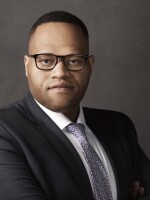Every Black and Latinx student from Hartford who wants a seat in a high-quality integrated school should be offered one.
That’s what state officials and civil rights attorneys committed to in a historic agreement reached Thursday. This comes 26 years after the Connecticut Supreme Court ruled that Hartford children “suffer daily” from the inequities caused by severe racial and economic isolation.
Elizabeth Horton Sheff — whose 10-year-old son Milo was the lead plaintiff when the lawsuit was filed three decades ago and turned 43 Thursday — said it feels like a brand-new day for Hartford children.
“I woke up this morning thinking OK, I feel like a mom who is bringing her child to school for the first time on the first day and ... trusting a child to a school system that, that is going to nurture and teach and encourage my child,” she said.
This is the sixth agreement out of the Sheff v. O’Neill case. If the state fulfills the promises, it will shed court oversight in 10 years.
Gov. Ned Lamont has agreed to spend at least $22 million over the next decade to open nearly 3,000 additional seats in desegregated magnet, vocational and suburban neighborhood schools.
Without a school choice program, Hartford students would be forced to attend segregated neighborhood schools. That’s because in Connecticut, students attend school in the municipality in which they live. In Hartford, 95% of the school-aged students are Black or Latinx, so the schools are inherently segregated.
Currently, 27% of Hartford students attend integrated schools but thousands more want to. Each year, 3,300 Black and Latinx Hartford students do not win a seat in the school choice lottery.
This new agreement hopes to meet 100% of the demand from Hartford children seeking a desegregated option. Court oversight, however, will end if the state meets 95% of that demand by 2032.
"During these three decades, thousands of children have benefited from the opportunity to attend quality integrated schools. But unfortunately, thousands have been put on waitlist or have been denied that opportunity,” said Martha Stone from the Center for Children's Advocacy.
“I’d like to remind all of us [of] that quote from the Langston Hughes poem that we recited on the very first day of the trial in the first hour of the court hearings on Dec. 19, 1992. What is a dream deferred? Does it dry up like a raisin in the sun? I’m hopeful today that the dream that the plaintiff shared then is on its way to being fully realized,” Stone said.
Like past agreements, this one also relies on suburban districts voluntarily offering seats for Hartford youth to attend their schools. Many suburban districts have been slow to do so, but this agreement would give those schools an extra $2,000 for each Hartford minority student who enrolls.
“We often throw words around like fairness, access, equity, and sometimes we use those words so much that they may at times, lose meaning, or it’s not always clear what we mean by fairness, access and equity and diversity,” said William Tong, Connecticut’s attorney general. “I think today we we see that this is what we need.”
The plan also provides up to $20 million to open sports and extracurricular activities in magnet schools that have struggled to entice more white suburban students to attend. The money can also be spent on redesigning the school’s programming.
Lamont, the sixth governor who has been involved in this case, said during a news conference after the court hearing that the agreement commits the state to doing the right thing.
“Every child deserves access to an education that provides them the best opportunity at the starting line of life, regardless of their ZIP code, family income level, race or creed,” Lamont said.
This agreement impacts only Hartford-area students and does nothing to remedy the segregation and inequities faced by students in Bridgeport, Waterbury and other cities in Connecticut.
To learn more about the Sheff v. O’Neill case, watch CUTLINE: Sheff v. O’Neill: Striving Toward Education Equity



